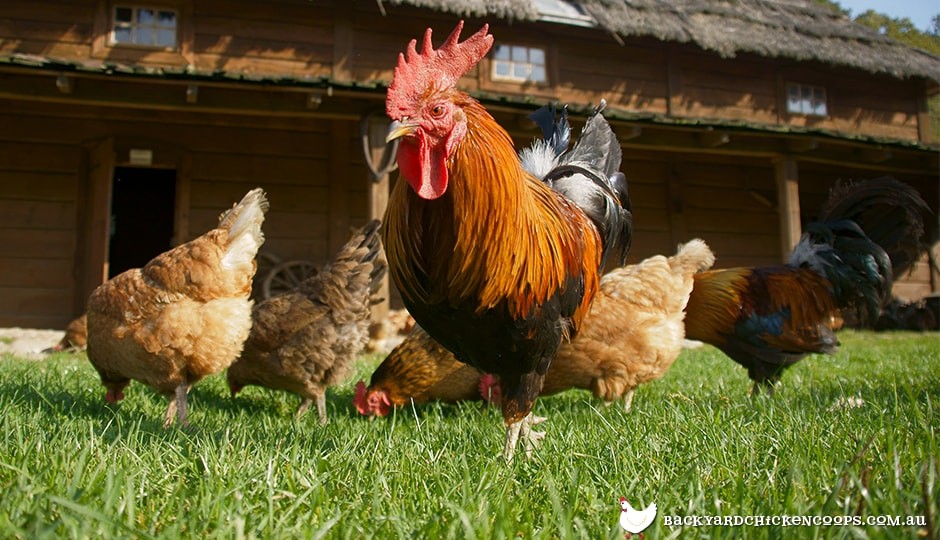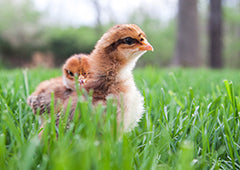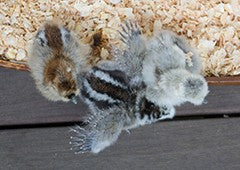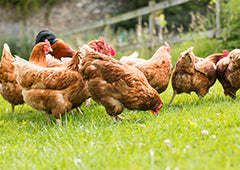Cockerel or pullet? The question of a chickens gender is quite important for most backyard chicken keepers, as having a rooster in a suburban area is generally not allowed. However, when purchasing young chicks, it can often be the case that a few of your pullets may actually be cockerels, and it won’t be long until you have some very cranky and tired neighbours on your hand.
So how exactly can you differentiate the males between the females? Most commercial poultry operations will perform a method known as vent sexing, where trained professionals will visually inspect the sex organs inside a day old chick’s vent, and thus determine and sort them accordingly- male or female. The differences between the sexes organs are so incredibly subtle, that even professionals are only 90% accurate- which is why you may purchase what should be a pullet, but is actually a cockerel.
Vent sexing, while it may seem simple enough, is not so straightforward, and so should be left to trained professionals. By improperly performing a vent sexing, you are at great risk of injury a baby chicken- so it’s best to stick to the methods that you will find listed below.
Determining the sex of a chicken can be quite difficult, with some breeds notoriously more difficult than others, however there are a few things you can look for in most breeds that will be a good indication of whether your chick is going to crow or lay.

Physical Differences
As your chicks start to age, they will start to display differing physical characteristics that can help to determine their gender.
-
Comb and Wattle Size: Cockerels will start to develop their comb and wattles much sooner, and will generally have larger and more prominent combs than their female counterparts.
-
Leg and Feet Size: Males usually have longer, thicker legs, and bigger feet than pullets.
-
Saddle Feathers: Males will begin to develop saddle feathers- found near the tail and over the back. They will be more pointed in shape, not rounded, like some females develop.
-
Hackle Feathers: These are found around a chicken’s neck, and will start developing around 4-6 months of age. In females, they are shorter and more round, whereas in males they are longer and more pointy.
-
Tail Feathers: Males will begin to grow tail (or sickle) feathers. They will be long, curvy feathers found at the top of the tail, and lining both sides- females will not develop these.
Behavioural Differences

Female and male birds will often display traits that help lend to determining their sex. It may not be 100% accurate, but these things are important to note.
-
Crowing: Ahh yes the all important crowing catastrophe! While most cockerels don’t begin to crow until about 10-12 weeks of ages, some have been known to start getting vocal as young as 2 weeks! If you are being awoken by what sounds like the beginning of lovely, loud crow, it’s likely you have a cockerel on your hands! (or a very dominant, masculine hen!)
-
Posture: If you pay close attention, you will find that cockerels will generally have a more upright and jaunty, even cocky stance compared to pullets.
-
Attitude: Often you will find that those birds displaying more aggressive or dominant traits are often cockerels. Of course pullets can behave this way too- but it is more likely that a cockerel will start to show assertiveness from a young age.
There are many ‘old wives tales’ methods of determining your chicks sex, however, these have been proven time and time again to not be accurate- although, there is always a 50/50 chance!
-
Egg Shape: It is said that a pointy egg is a hen, and a more rounded egg is a rooster- like we said, 50/50 folks!
-
Ring on a String: According to some, if you tie a gold ring on a string and hold it above the chick, it will begin to move on it’s own- in a circle if you have a hen on your hands, or a straight line for a rooster. Not scientifically proven, but it could be a fun theory to test!
-
Water Taste Test: Another absurd theory- fill two bowls with water, leave one as is and add a teaspoon of white vinegar to the other. The roosters are said to go for the plain water, while pullets will choose the vinegar mix- we’re not buying it…
So if you’re uncertain if you have a George or Georgina on your hands, keep a close eye on your flock, or test the less traditional methods above and it won’t be long before you have an answer!
No matter the sex, all chickens need a safe and secure coop to call home. The Taj Mahal, Penthouse and Mansion are all great quality coops that a chicken will be happy to make home!
Where you're got a Henry or Henrietta, you'll want to do an eggcellent job when caring for your feathered friends. From herbal treatments to disease prevention, make sure that you've got the knowledge you need to raise happy, healthy chooks. Did you know 67% of chicken keepers surveyed experienced a chicken health or behaviour issue in the first 12 months that they didn’t know how to handle?
But don’t worry! Our feathered friends over at Chickenpedia have created a Chicken Healthcare Course. It is a comprehensive online course that covers everything you need, including what to look for in an unhealthy chicken and how to support your egg-laying hens to optimal health. All of their courses are really well structured and filled with vital information, which is why I highly recommend them to all of my readers! From raising baby chicks to feeding to behavior, you’ll find valuable information that’ll give you the knowledge and confidence to successfully look after your chickens.
Check out Chickenpedia today. As a member, you will also get access to the ALL of their chicken courses!

















